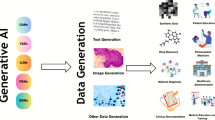Abstract
In recent years, US healthcare experts have increasingly agreed that the effective application of information technology (IT) can enable the industry to address its three most pressing concerns: an increase in medical errors, rising costs, and the fragmentation of care delivery. While other industries have fully adopted and capitalized on IT to optimize operational efficiencies and customer service delivery, healthcare systems in the US have generally been slow to make a full transition.
Presently, one of the quickest and most efficient ways health systems can begin to benefit from IT is through the implementation of the electronic health record (EHR). This dynamic resource provides key healthcare stakeholders (patients, payers, and providers) with a comprehensive view of current and historical patient data compiled from various sources. It holds tremendous potential for better management of chronic diseases, improving outcomes, and streamlining expenses.
While the EHR has been shown to generate positive results in its limited use so far, its widespread implementation faces several hurdles, most notably cost. Additionally, primary EHR users (payers and providers) often experience initial infrastructure and personnel burdens, along with potential workflow disruptions. Despite this, considerable support for the EHR as an entry point for full-scale IT adoption is mounting in the US with a number of high-level government initiatives.
This article examines the current state of health IT efforts in the US, the barriers to further adoption, and how technology can be, and is being, used to meet major challenges in the US healthcare industry. Although this article exclusively examines the US healthcare system, the author believes that many of the issues and scenarios described herein are universal among healthcare systems worldwide. At the same time, the author acknowledges that, to a great degree, each nation’s healthcare system faces its own unique considerations that may or may not be reflected in or relevant to the information in this article.
Similar content being viewed by others
Notes
The EMR contains data gathered by physicians and other healthcare providers in an electronic format. The EHR is the combination of all electronic patient data from sources including the healthcare payer, provider, and patient.
References
Kuperman GJ, Gibson RF. Computer physician order entry: benefits, costs, and issues. Ann Intern Med 2003; 139: 31–40
Kaushal R, Blumenthal D, Poon E, et al. The costs of a national health information network. Ann Intern Med 2005; 143(3): 165–73
Bates DW. The quality case for information technology in healthcare. BMC Med Inform Decis Mak 2002; 2: 7
Frist WH. Shattuck Lecture: health care in the 21st century. N Engl J Med 2005; 352(3): 267–72
Handler T, Holtmeier R, Metzger, J, et al. HIMSS electronic health record definitional model, Version 1.0: EHR definition, attributes and essential requirements Version 1.0. [online]. Available from URL: http://www.himss.org/content/files/EHRAttributes.pdf [Accessed 2006 Dec 1]
Simon JS, Rundall TG, Shortell SM. Drivers of electronic medical record adoption among medical groups. Jt Comm J Qual Patient Saf 2005; 31(11): 631–9
Kohn LT, Corrigan J, Donaldson MS, editors. To err is human: building a safer health system. Washington, DC: National Academy Press, 2000
Aspden P, Wolcott J, Bootman JL, et al., editors. Preventing medication errors. Washington, DC: National Academy Press, 2006
Washington DC: Centers for Medicare and Medicaid Services, 2005. National health care expenditures projections: 2005–2015 [online]. Available from URL: http://www.cms.hhs.gov/NationalHealthExpendData/downloads/proj2005.pdf [Accessed 2006 Aug 2]
Wiley VJ, Daniel GW. An economic evaluation of use of a payer-based electronic health record within an emergency department. Wayne (PA): MEDecision, Inc., 2006 Jul. (Data on file)
National Hospital Ambulatory Medical Care Survey: 2004 emergency department summary [no. 372]. Hyattsville (MD): National Center for Health Statistics, 2006 Jun 23
Hackbarth G, Milgate K. Using quality incentives to drive physician adoption of health information technology: Medicare should help physicians overcome the barriers to adoption but should not simply pay the bill. Health Aff (Millwood) 2005 Sep–Oct; 24(5): 1147–9
EHRs may benefit small practices financially, but only modest gains in quality seen. Healthc Financ Manage 2005 Oct; 59 (10): 126
Baron RJ, Fabens EL, Schiffman M, et al. Electronic health records: just around the corner? Or over the cliff? Ann Intern Med 2005; 143: 222–6
Amatayakul M, Hodges L. Don’t underestimate the people costs of EHR. Healthc Financ Manage 2006 Aug; 60(8): 130–1
Lapointe L, Rviard S. Getting physicians to accept new information technology: insights from case studies. CMAJ 2006 May 23; 174(11): 1573–8
Zaroukian MH, Sierra A. Benefiting from ambulatory EHR implementation: solidarity, six sigma, and willingness to strive. J Health Inf Manag 2006 Winter; 20(1): 53–60
Office of the National Coordinator for Health Information Technology. Department of Health and Human Services. Current market barriers and challenges to widespread adoption of health information technology [online]. Available from URL: http://www.hhs.gov/healthit/barrierAdpt.html [Accessed 2006 July 29]
Chaudhry B, Wang J, Wu S, et al. Systematic review: impact of health information technology on quality, efficiency, and costs of medical care. Ann Intern Med 2006; 144(10): E12–W18
Bush G. 2004 state of the union address [online]. Available from URL: http://www.whitehouse.gov/stateoftheunion/2004 [Accessed 2006 Aug 2]
HHS Press Office. HHS awards contracts to advance nationwide interoperable health information technology [online]. Available from URL: http://www.hhs.gov/news/press/2005pres/20051006a.html [Accessed 2006 Aug 2]
H.R. 4859 — 109th Congress: Federal Family Health Information Technology Act of 2006 [online]. Available from URL: http://www.govtrack.us/congress/bill.xpd?bill=h109-4859 [Accessed 2006 Aug 2]
Promoting quality and efficient health care in federal government administered or sponsored health care programs [online]. Available from URL: http://www.whitehouse.gov/new/releases/2006/08/20060822-2.html [Accessed 2006 Aug 22]
Acknowledgments
Dr DePhillips is an employee of MEDecision Inc., a software, services and clinical content provider who funded the economic benefits study referenced in the review. The author has no conflicts of interest or sources of funding that are directly related to the contents of the review.
Author information
Authors and Affiliations
Rights and permissions
About this article
Cite this article
DePhillips, H.A. Initiatives and Barriers to Adopting Health Information Technology. Dis-Manage-Health-Outcomes 15, 1–6 (2007). https://doi.org/10.2165/00115677-200715010-00001
Published:
Issue Date:
DOI: https://doi.org/10.2165/00115677-200715010-00001




